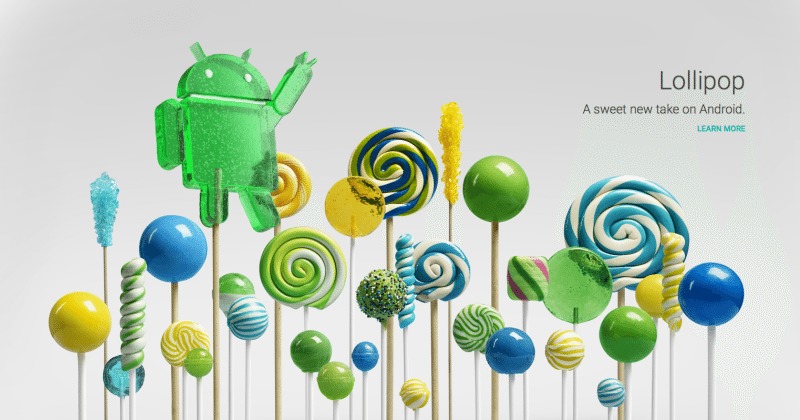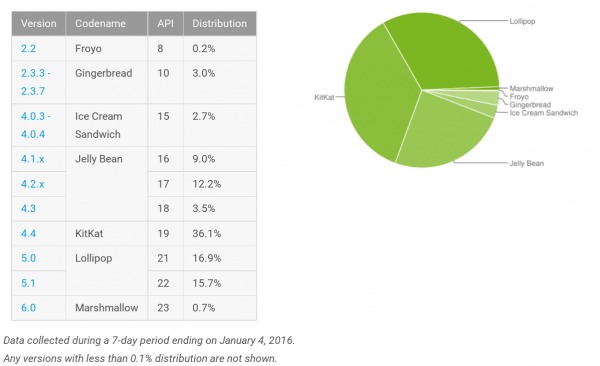
Google has just released the first Android Distribution numbers for 2016 and things are looking good, especially for Lollipop. The combination of Android 5.0 and 5.1 is practically taking up a third of the market, hinting at strong adoption despite being perhaps one of the most disruptive Android releases since Ice Cream Sandwich. The latest Android Marshmallow, on the other hand, is only taking very small steps forward, which Isn’t exactly that surprising given how new it is. Over all, there might still be some hope in the fight against fragmentation.
The chart can now practically be divided into three parts, with the three Jelly Bean brothers (24.7%), KitKat (36.1%), and the two Lollipop releases (32.6%) taking up the bulk of the pie. The rest, in total, only make up a rather small 6.6%. And yes, that still includes the undying Froyo.
It is somewhat encouraging to see the strong uptake of Android Lollipop, considering how much it has changed Android, both inside and outside. Aside from the new Material Design language, Android 5.0 also makes a jump to the new Android Runtime (ART), which, at the beginning, did break some apps. Google was more vigorous in pushing Lollipop adoption and now the fruits of that labor are starting to show.
In contrast, Android 6.0 Marshmallow hasn’t been given much of a push, though that doesn’t mean it is by any means less than worthy. It will take some time, however, before we see it grow by leaps and bounds. That said, Android N might be a bit more interesting, with promises of things like multi-window or split screen windows coming to the platform.

Overall, it still bodes well for Android as a whole, with majority of devices converging towards the latest 2 or so releases instead of being spread equally among versions dating years back.









